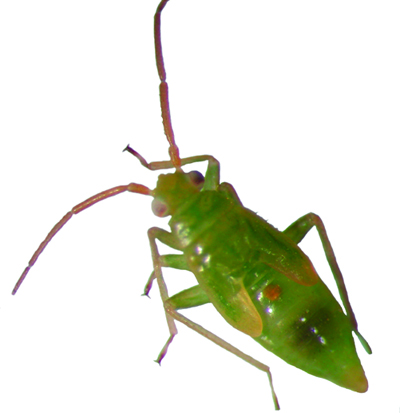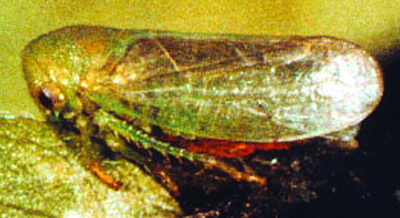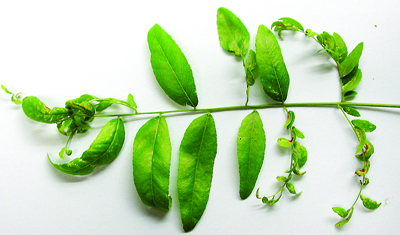Honeylocust plant bug and Honeylocust leafhopper
July 30, 2015
Diaphnocorus chlorionis and Macropis fumipennis
These two insects are often found at the same time feeding on honeylocusts, but plant injury is due almost entirely to the plant bug.

Nymph of honeylocust plant bug, about 4 mm long.
Honeylocust plant bugs overwinter under bark as eggs. They hatch and begin feeding as new leaves develop, from late April to mid-May. Nymphs mature into adults in about one month. There is one generation per year.

Leafhopper adult about 4.5 mm long.
Management
Look for nymphs as saucer magnolia and bridalwreath spirea are in bloom. Determine population levels by tapping terminals over a white piece of paper. The insects will be visible on the paper. Treatment may not be necessary, unless trees are heavily infested.

Honeylocust leaves distorted and stunted from feeding injury caused by plant bug adults and nymphs. Defoliation may occur on severely infested trees.
Print a PDF of this page: Honeylocust plant bug and Honeylocust leafhopper



 Print
Print Email
Email



